Organic fertilizers for flowers. Fertilizer basics for indoor flowers for rapid growth and lush flowering
Very often for abundant flowering many crops need top dressing with minerals or organics, and it is very important to know what fertilizers for beautifully flowering indoor plants fit better.
1
First of all, phosphorus is needed for the formation of ovaries and buds, it is he who is responsible for the development of inflorescences and individual flowers, as well as for the formation of petal color and other decorative qualities. In addition, phosphorus ensures the safe maturation of ovules in the reproductive organs of plants. The lack of this element leads to the crushing of buds, as well as to a decrease in the volume of green mass and the length of the stems. However, in no case should they be overfed, since this will lead to accelerated development, death and shedding of petals and green leaves, since other important minerals will be replaced by this element.
Top dressing with mineral fertilizers
No less important are iron and magnesium, which are generally responsible for photosynthesis and, as a result, the development of the plant. With their shortage, the indoor culture simply will not bloom, or the formation of buds will be greatly inhibited, their grinding will be noticeable. An overabundance will also affect the formation of flowers, since the plant will rapidly grow, primarily providing nutrition to the stem, root system and green mass. In this case, you can not wait for the appearance of buds at all, or you can get so small that you don’t have to dream of any decorative qualities.
Potassium is very important for indoor crops, since it is he who is responsible for the formation of immunity to various diseases characteristic of certain species. This mineral contributes to the resistance of the plant to various aggressive manifestations. environment, that is, to drought, cold, excessive soil moisture, too high temperature air. Accordingly, with a lack of potassium, the flower can either grow stunted or die altogether, and when flowering, the lack of this element will necessarily affect the development of buds or lead to the appearance of a focus of the disease in them.
Actually, these are the main components of the mineral composition, without which the growth of ornamental crops (as well as fruit crops) is impossible, this is true both in relation to garden plants, and room. They can be used in pure form(of course, diluted), and in the composition of organics, where they are present along with other substances important for flowers. In no case can pure compositions of mineral supplements completely replace natural supplements, and vice versa, organics rarely do without supplements in the form of complexes of phosphorus, potassium and magnesium.
Sulfur before the formation of buds and during the blooming of flowers is not recommended to be used in the composition of top dressing, it can adversely affect the reproductive organs of the plant until they die.
2
It is very important to choose the right period when to set certain mineral elements or their ready-made complexes sold in specialized stores. This is especially true for indoor crops that do not have a period of awakening after winter, and active growth continues. all year round. But it should be remembered that if in the garden each bush is surrounded by a significant area of \u200b\u200bsoil, indoors a small amount of potted soil is available to it, where nutrients run out quite quickly. The basic rule is that the warmer the season, the more actively the flower develops and the more it requires top dressing.. Some species of plants periodically have dormant periods when there are no buds or new leaves, at this time top dressing is not required so that there is no overdose.
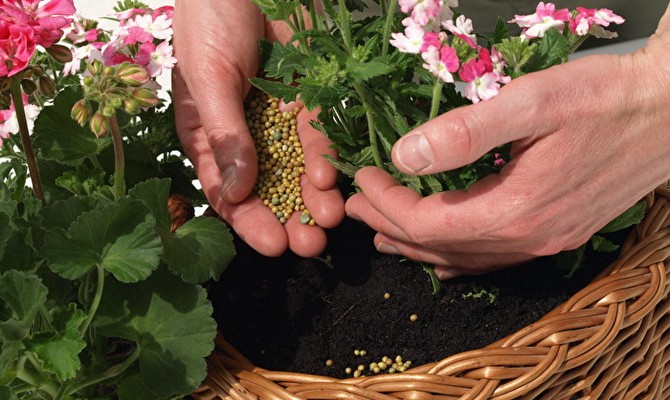
Fertilizing flowering plants
The second rule is that the more water the plant consumes (we are talking about moisture-loving species), the more often it is necessary to provide it with top dressing, since the roots also absorb nutrients with the liquid. However, it should be borne in mind that it is possible not to follow the recommendations of experts to feed when the soil is moist, it is allowed to breed directly in the water for irrigation. Moreover, some flower growers advise that it is better to deviate slightly from the instructions for preparing solutions and make them less saturated, but at the same time feed them not once a week, but 2–3, which will allow you to constantly maintain a certain level of mineral elements in the soil.
Remarkably, it is necessary to focus on the growth rate of room culture, which to a large extent depend on air temperature. As already mentioned, with the onset of heat, development accelerates, but if mercury crawls down on the thermometer, at least a few degrees, the rate of cell division decreases significantly. As a result, the cooler, the less the plant consumes moisture, the less often it needs top dressing. However, there are always exceptions, such as crops that require a lot of water, but do not need a lot of minerals, such as ferns. They can be mixed with top dressing when watering every other time, or even only once a week.
Be sure to keep in mind that plants are divided into different groups, and each of them needs a certain feed. For example, decorative foliage plants need nitrogen for the development of green mass and growth, but they need less phosphorus. And vice versa, flowering plants mainly require phosphorus as a top dressing, and nitrogen during the flowering period is contraindicated for them and is needed only after a dormant period, for growth. However, cacti can also be classified as flowering, and they do not need frequent watering, and they need top dressing with a minimum nitrogen content or without this element at all. And orchids, which are considered the most beautiful indoor plants, require the most dilute minerals, that is, their concentration should be as low as possible. It should be remembered that hibiscus, although they bloom, practically do not accept phosphorus, the same applies to crops whose homelands are regions with soil poor in phosphorus.
3
It may happen that you incorrectly calculated how much top dressing should be diluted in water for irrigation or laid in the ground. Above, we described what will happen if the amount of one or another element exceeds a critical level, but separately minerals are not always used, most often complex top dressing is laid in the soil. What are the signs of oversaturation with several of its components at once? First of all, this is the loss of turgor, that is, the tension of the membranes of plant cells disappears, they seem to fall off, partially devoid of internal hydrostatic pressure. Because of this, lethargy of leaves and stems is observed in all plants without exception, which, with a sufficient amount of moisture in the soil, always indicates an excessive amount of minerals.
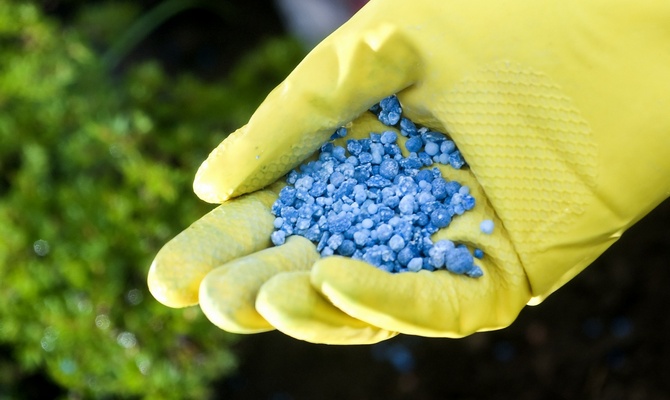
Mineral fertilizers for flowers
The first steps to be taken are emergency assistance. First, we cut off part of the top layer of soil, and so as not to damage the roots of the plant. Then we remove the root ball, wrap it in gauze, after which, washing it, wrap it in a paper towel, let the water soak into it and leave it to dry. During this time, you need to water the soil in the pot abundantly so that the water constantly flows out through drainage holes at the bottom. After that, we also let the earth dry in a pot, make a hole, put a root ball in it, sprinkle it with fresh soil and water it. clean water. next mineral supplement can be set no earlier than 2 weeks later, when the plant comes to its senses.
4
The humus contains all the same minerals, and their composition is quite large, but the concentration varies, depending on the composition of the fertile soil layer. At the same time, in addition to the set of elements of the periodic table, other substances are also contained in the soil. In particular, humus and peat contain humic acids, which interact with minerals, resulting in complexes that significantly increase the viability of plants, increase the number of peduncles and the size of buds. This happens due to the fact that phosphorus in conjunction with humic acids is better absorbed, and nitrogen is supplied through the roots in a dosed manner due to a decrease in mobility.
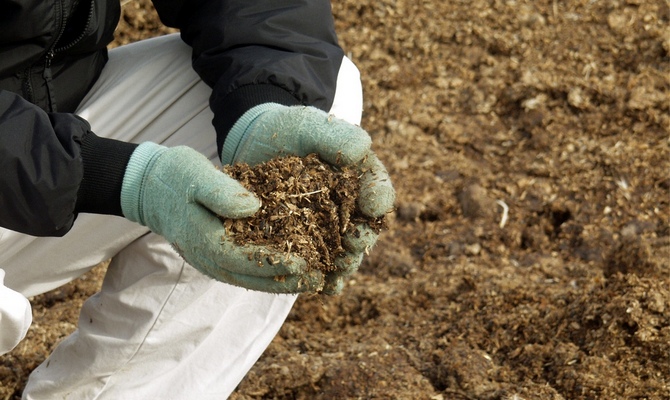
Humus for flowers
Also in humus and peat there are humates - salts of humic acids, these substances can also be purchased in the form of preparations on an organic basis. In fact, in its pure form, these are nothing more than growth stimulants that must be used carefully, but in their natural form they are fertilizers that accelerate the development of the plant, which is why many flower growers prefer to germinate seeds. Potassium or ammonium humates are very effective. However, it should be borne in mind that peat-based organics can pretty much alkalize the soil in a flower pot.
In general, humus should be treated like a classic top dressing fertilizer, especially if it contains bird droppings - this option should be diluted at a ratio of 10 grams per 3 liters of water. Leaf humus is considered the best in effect, in which minerals are usually balanced. You can mix it with the soil in its pure form, you just need to take measures by disinfecting the top dressing accessible ways to exclude the presence of pathogenic bacteria, fungi and viruses. If you want to use mullein-based organics, it should be diluted at the rate of 100 grams per 10 liters of water for subsequent irrigation.
5
Not all novice flower growers realize that even the foods we eat daily, as well as the waste that occurs during the cooking process, can be used as top dressing. But let's start with what can be immediately used for irrigation, while being a source of organic and mineral substances - from aquarium water. It should be noted right away that for a number of reasons, the pH level in it is always close to neutral in it, in addition, it promotes plant growth, so it should be applied in spring or autumn, but not at the time of flowering. And, according to the advice of flower growers, no more than 1 time per month.
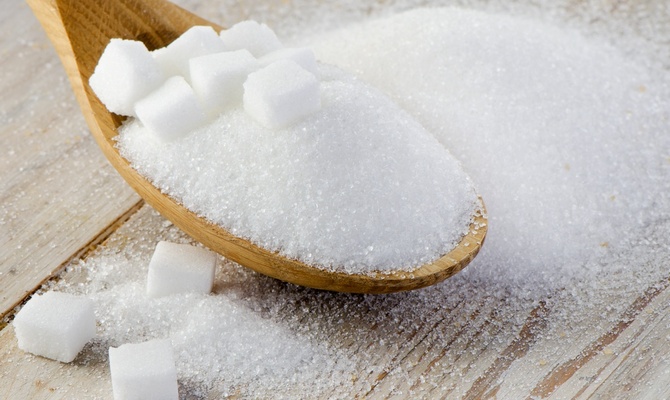
Sugar as fertilizer
Perhaps this will surprise someone, but you can also feed it with sugar, and the benefits of it are considerable. The fact is that glucose, which is one of the main components, in addition to fructose, is an excellent construction material, on the basis of which complex organic molecular chains are formed. However, sugar in its pure form, mixed with soil, can lead to the formation and spread of fungal diseases or the appearance of colonies of pathogenic bacteria. That's why best option- dilute sugar in water in a ratio of 1 tablespoon to 500 milliliters of water, or sprinkle the soil with the same amount before watering. It is necessary to carry out such top dressing no more than 1 time per month.
Pure sugar can be replaced with pharmacy glucose, the tablets of which will dissolve 1 piece per 1 liter of water and are used for irrigation.
Suitable for fertilizing the soil and boiled coffee, that is, in other words, thick, which is mixed with soil in a pot. This top dressing option increases the looseness of the soil, but also increases its acidity, so you should focus on the pH requirements of a particular room culture. A similar effect can be given by tea brewing, thanks to which the looseness and fertility of the soil in flower pots increases, but it should be remembered that such natural top dressing is a good environment for the appearance of sciarids (small midges).
The peel of citrus fruits can also serve as a source of nutrients necessary for indoor plants, although not in its pure form. We will need to prepare a tincture from them, for which we cut the peel finely thinly cut from oranges or lemons, pour it into a liter container and fill it with boiling water. Then it is necessary that our future top dressing is infused for a day, after which we filter the liquid and add exactly as much pure water to get a liter again. Now you can safely water the flowers. Banana peel can be used in a similar way, which, however, in crushed form, can be directly mixed with the soil, after thoroughly drying it beforehand.
Very useful for plants are ordinary nutritional yeast, both dry, in the form of granules, and those that are sold in a bar. Moreover, this product is used as a growth stimulant, since phytohormones are present in the composition along with a group of vitamins B. In addition, they include auxins and cytokinins, and just the latter are responsible for active cell division. It should be noted that the product has a very beneficial effect on the soil, triggering increased mineralization, and is a breeding ground for microorganisms. So, here is our recipe: take 1 liter warm water, add 1 tablespoon of sugar and 10 grams of yeast there, then mix thoroughly until the ingredients are dissolved. We wait 2 hours, after which the infusion can be diluted with 5 liters of water and water the plants.
An excellent fertilizer is obtained from water-infused onion peel. The point is that the dry skin onion is a source of a fairly large number of trace elements. All you need is 50 grams of this raw material, preferably in a slightly crushed form. We put the husk in a large container, where we first pour 2 liters of water, then put it on gas and wait for the boil to begin. From this moment, cooking should last no more than 10 minutes, then turn off the burner and cool for 3 hours, during which time the broth will additionally infuse. It remains only to strain the liquid through gauze into another container and use it for irrigation, while simultaneously providing top dressing. It is impossible to store this fertilizer, for each next irrigation of flowers we prepare a new portion.
6
For beautiful flowering indoor cultures, experts often use the so-called succinic acid, which is produced from the "stone" of the same name, which is, in fact, a hardened resin. After applying certain technologies, a whitish powder is obtained from this fossil, very reminiscent of granules. citric acid, and the taste is also quite similar. 1 gram of this substance, dissolved in 5 liters of water, is enough to feed all houseplants, both basal and leafy. However, it is allowed to use such fertilizer only once a year, just before flowering.
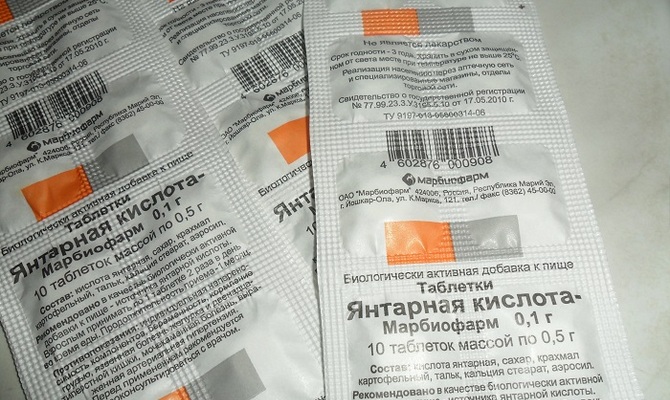
succinic acid
Experienced flower growers often use water after cooking vegetables, it contains quite a lot nutrients. Water is also often used, in which any cereal was washed, from buckwheat to millet, it contains phosphorus, which is so necessary for the development of buds. Interestingly, toothpaste can also make a good top dressing (as an option, you can use tooth powder for the same purpose). The recipe is very simple: for 3 tablespoons of powder or a third of a tube of paste, you need 1 liter of water. In combination with the powder, the same amount is usually also added. wood ash and 3 times less blue vitriol. The paste is used without additives. The resulting liquid can be watered with plants that for some reason began to look unhealthy.
Feeding indoor plants ensures their full development. Potted soil quickly becomes scarce. Due to the lack of nutrients, the flowers stop growing, wither, the leaves may turn yellow. From the article you will learn how to feed indoor flowers and in what period it is better to do it, how to choose fertilizers for plant growth.
For growth and abundant flowering, plants need top dressing.
Fertilizers for flowers, especially those growing in pots, are necessary because plants deplete the soil. Transplanting into fresh soil helps to make up for the lack of nutrients, but only for a couple of months. Such frequent transportation of plants is useless, therefore, fertilizers must be applied to the soil.
If you have read articles about indoor plants, then you have probably heard that each of them has a period of active growth. Usually it falls on spring-summer - at this time the leaves actively grow at the flower, flower stalks develop. It is during such periods that top dressing for indoor flowers is necessary. Depending on the species characteristics, the period of active growth can occur in plants at different times.
Plant fertilization rules
Before choosing and applying fertilizer, you need to learn the basic rules:
- Overfeeding a plant with fertilizer is even more harmful than forgetting to do so.
- Flowers absorb fertilizer well during the period of active growth and flowering. But not everyone needs top dressing during flowering! For example, blooming orchids cannot be fertilized - the flowers will quickly fall off.
- In winter, the assimilation of nutrients by the plant is slower due to lack of light, therefore, feeding indoor flowers should occur less frequently. Plants with a pronounced dormant period (for example, succulents) do not fertilize at all in winter.
- If produced root dressing plants with special solutions, it is necessary to prevent the liquid from getting on the foliage.
- Young plants need to be fed with weaker fertilizer solutions than adults.
- At different periods of vegetative development, different kinds top dressing. In the phase of active growth - nitrogen, with the development of peduncles and flowering - phosphorus-potassium.
- Before fertilizing, the soil must be moistened with clean water so that the solution does not burn the root system.
- Do not feed recently transplanted, weakened, diseased plants.
- It is better to fertilize in the afternoon, when there is neither heat nor bright sunlight.
- Fertilizer for indoor plants should be complex. It is important to remember the compatibility of minerals. For example, magnesium is poorly absorbed when calcium is added, so they are not combined.
Signs of lack or excess of fertilizers in the soil
When a plant lacks nutrients:
The following signs indicate that the plant is overfed:
- Gray-white coating on the soil surface even when using soft water for irrigation.
- Lethargy of the leaves and drying of the tips.
- Poor growth of green mass, fragility of leaves.
- Decreased resistance to disease.
Important elements for plant nutrition
Fertilizer for flowers should meet his needs. It is no coincidence that stores sell separate complexes for flowering plants, decorative foliage and succulents. Plants with lush leaves require nitrogen fertilizers, and flowering - containing phosphorus and potassium.
Fertilizers are: liquid, powder, tablet, granular, compressed. Liquid solutions are most well absorbed by the plant. There are also those that need to be dissolved in water and sprayed on the foliage. Complex store-bought fertilizers for indoor plants contain the main elements:
- Nitrogen, which promotes the development of plants. With its shortage, the leaves lose their color intensity, fade.
- Phosphorus is essential for full vegetative development. The lack of an element leads to fading of the leaves, inhibition of growth.
- Potassium is needed for lush flowering. If it is not enough, the plant does not bloom or the inflorescences become smaller.
- Sulfur. With its lack of leaves begin to fade.
- Calcium. The lack of an element leads to the death of the crown of the plant, while the rest of its parts look healthy.
Types of fertilizers
All fertilizers can be divided into organic and mineral. Organic fertilizers for indoor plants are of plant or animal origin, mineral fertilizers appear as a result of the processing of raw materials, industrial waste, and the mining industry.
organic fertilizers
Organic fertilizers include poultry and animal droppings (chickens, geese, ducks), vegetable composts, and peat bogs. Such dressings contain all the elements that improve the structure of the soil, provide better absorption of mineral fertilizers by the plant in the future.

Organic fertilizers are added to the soil when transplanting.
Mineral fertilizers
Fertilizers of such a plan are necessary in the case when organic ones run out in the soil. They are divided into nitrogen, potassium, phosphorus. Among the nitrogen most in demand: ammonia, calcium, sodium nitrate, ammonium sulphate, urea. From potash - wood ash, potassium nitrate, potassium sulfate. It is convenient to buy complex dressings, in which useful elements are already collected in acceptable proportions.
Top dressing during the period of active growth
In spring, plants need not only pruning of old shoots, soil replacement, but also increased fertilization. After transplanting, the plant must be given a month to adapt to new conditions, and then start feeding. When the flower takes root and grows, you need to use nitrogen fertilizers. Bulb plants or young cuttings should not be fed like this, as nitrogen can damage the young root system.
In the middle of spring, it is necessary to start applying potassium-containing fertilizers (potassium sulphide, potassium magnesia). They are usually applied by spraying or watering under the root. When flowering plants begin to form buds, use preparations with phosphorus (superphosphates, ammophos).
Phosphorite flour can be laid in the soil. To do this, half a teaspoon is stirred into 10 liters of soil. To stimulate the abundant ovary of flower stalks, plants need boron. The solution is prepared by stirring 0.2 g of the drug in 1 liter of water. Magnesium is also needed for abundant flowering, but it is applied separately from phosphorus, because in the complex the elements are poorly absorbed by the plant.
Fertilizers in winter
AT winter period Fertilizers are needed for plants that bloom or grow all year round. These include azalea, violet, spathiphyllum, pelargonium, ficuses. However, in the cold season, top dressing should be applied less frequently, since the daylight hours are shorter - 1 time per month will be enough. Cacti and succulents are dormant in winter, so they do not need to be fed and watering should be reduced.
In order for the plant to continue to grow green mass and bloom in winter, complex fertilizers with nitrogen, phosphorus and potassium are used. Home remedies are also suitable - ash solution, sugar, iodine solution for pelargoniums. Sugar, for example, contains glucose useful for plants.

Sugar is actively used as a top dressing.
Glucose serves as an energy source for all plant life processes, but will not be absorbed if there is a shortage. carbon dioxide. Moreover, it can cause the development of root rot and mold. The use of sugar will make sense when combined with EM drugs (drugs of effective microorganisms). You can simply sprinkle the soil with sugar and then pour it with water, or you can dissolve a tablespoon of sugar in 500 ml of water for irrigation.
Remember that an excess of fertilizer for plants can be more detrimental to their lack. Choose a fertilizer according to individual needs and characteristics of the flower. Correct top dressing- a pledge of lush flowering and active plant growth.
Growing indoor flowers is associated with many worries, but an inexplicable feeling of pleasure covers all the shortcomings. One of the main concerns of flower growers is the choice of fertilizer for home flowers. A small amount of soil in a pot is unable to fully cover the consumption of nutrients for the growth of a flower, which leads to a deterioration in its condition and appearance. To avoid similar situation, fertilizing should be done in a timely manner.
Types of fertilizers
All fertilizers are conditionally divided into two large groups: mineral and organic. Organic fertilizers are of vegetable or animal origin. These can be waste products of living beings: livestock manure, bird droppings, aquarium water. Plant nutrients include silt from the bottom of reservoirs, compost, peat, and some types of food waste.
Mineral fertilizers appear as the results of the mining industry, processing of raw materials, waste industrial productions. Most often, a mineral looks like a substance containing large accumulations of one element. For complex feeding, prepare a mixture of elements that meets all the needs of plants. The main mineral elements important for the development of indoor plants are nitrogen, potassium and phosphorus.
Separately, a group of humic fertilizers can be distinguished. Humus as an independent preparation is ineffective for flowers, but in combination with one of the minerals, it is a high-quality top dressing. Potassium humate is especially useful for indoor flowers.
According to the chemical composition, fertilizers are divided into:
- alkaline (saltpeter, lime);
- acidic (ammonium salts and sulfates, potassium salts);
- neutral (organic and superphosphate).
Release form:
- liquid
- granulated
- in the form of plates (tablets).
At home, liquid mineral or complex fertilizers for indoor plants and flowers are most effective. It is convenient to use granular fertilizers as the main top dressing applied when transplanting directly into the ground in the spring. They give nutrients gradually, without oversaturation and burns of the root system.
Signs of deficiency or excess of nutrients
All the same small volume flower pots forces you to carefully monitor the applied top dressing, noting signs of a lack or oversaturation with mineral fertilizers.
If a houseplant lacks nutrition, it:
- more susceptible to diseases and pests than usual;
- sheds leaves (lower branches may also die off);
- slows down growth and stops development;
- loses color and depth of color;
- becomes brittle and brittle;
- stops blooming or throws out small buds that quickly die.
Compliance with the measure is very important, oversaturation with nutrients leads to:
- grayish-white coating on the soil surface, despite watering with soft water;
- loss of turgor leaves and their sluggish state;
- drying of the tips of the leaves;
- to fragility of leaves and poor growth of green mass;
- deterioration in disease resistance.
Overfeeding indoor flowers with organic fertilizers is quite difficult, but an increased content of a single mineral element in them can cause the symptoms described above.
For example, humus, as an organic matter, increases the friability and moisture capacity of the soil, but an increased nitrogen content, if applied incorrectly, can cause root burns.
Top dressing should be carried out correctly: taking into account the season, goals and method of application.
Rules for fertilizing the soil
For fertilizing indoor flowers, a whole set of rules was developed, which consisted of practical experience flower growers.
- Flowers that are in a state of rest, after transplantation or affected by a disease, do not fertilize.
- When calculating the amount, lighting is taken into account. The less sunlight a plant gets, the less nutrients it uses.
- When root dressing, do not allow the solution to get on the foliage, stem and branches.
- Before fertilizing, indoor flowers are watered with clean water. This will help prevent root burns.
- Fertilizers change depending on the growth phase: nitrogen per initial periods, phosphorus - during flowering.
- The time for feeding indoor flowers is chosen in the evening, avoid intense heat and sunlight.
- In the spring they are fed regularly, in the winter they are reduced.
- The excess of one element does not overlap the need for others. Home flowers fertilize comprehensively.
- Observe the combination of minerals. So magnesium interferes with the absorption of calcium, so they are added separately.
Correctly calculate and apply fertilizer will help a comprehensive examination of the flower. You should pay attention to its appearance, the condition of the leaves, the stem, the surface of the earth. Often, a lack of minerals is mistaken for improper care or damage to plants. The decision on how and what to feed is made individually for each green pet, so as not to make a mistake in the choice.
Winter top dressing
A controversial issue for many flower growers is whether top dressing is needed in winter. The solution depends on the type of plant. If a home flower belongs to cacti or succulents, then the winter period for them is a resting phase, which requires the removal of top dressing, reduced watering, and lower temperatures. But if it comes to plants that bloom year-round, then you should take care of additional nutrition. Azaleas, spathiphyllums, violets, and similar flowers need reduced feeding to maintain flowering.
To continue flowering and growth of green mass in winter, the plant needs the main minerals: nitrogen, potassium, phosphorus.
You can use complex fertilizer, but its introduction should be more rare than in spring. In addition to ready-made preparations, home flowers are fertilized with improvised means: ash solution, glucose, iodine solution for geraniums and pelargoniums, and drunk tea.
The process of fertilization during the period of active growth
In the spring, the vital processes of domestic plants are activated; flower growers transplant them into new ground, cut off old shoots, giving rise to the growth of new ones. Together with the renewal and as the flower grows, it undergoes several periods of fertilization. After transplantation, the plant needs reserves of strength to grow shoots and develop. For these purposes, nitrogen-containing fertilizers are used, after making sure that the flower has taken root and gone into growth. At home, ammonium nitrate is usually used, less often urea. It should be remembered that nitrogen is not safe for tender roots, therefore bulbous plants do not fertilize immediately after a dormant period. The same applies to newly rooted cuttings.
To maintain the growth of home flowers in the spring, potassium preparations are required. Carried out by spraying or basal method. In the first case, a solution is prepared and the leaves of the plant are treated with it, in the second, fertilizer is applied to the ground. The most popular drugs: potassium magnesia, potassium sulfide, potassium salt.
At the beginning of the formation of buds, there is a need for enhanced nutrition with phosphorus.
For abundant flowering, ammophos and superphosphates are mainly used, which are quickly soluble in water and are convenient for applying to the ground immediately before flowering.
For laying in the ground, phosphate rock is taken at the rate of 1/2 teaspoon per 10 liters of soil mixture. To increase the number of ovaries, home flowers need boron. To prepare the solution, take 0.2 g of the drug per 1 liter of water. Magnesium is also required for flowering plants, but its application is carried out separately from phosphorus, which interferes with its absorption.
The basis of luxurious flowering is the timely application of fertilizers: in the spring, when the flowers are ready to gain nutrients for active growth; and throughout the entire period of development in the form of basal irrigation and foliar spraying. Each plant requires an individual approach and observation: what is useful for one may be detrimental to others, so flower food is selected in accordance with the type of plant.
Nitrogen is very important element for healthy plant growth. It is this element that is responsible for the rich harvest and health of garden and indoor crops. Plants have a special need for nitrogen in the spring. During active growth, they need to get all the most valuable from the soil. Various methods can be used to enrich the soil. industrial fertilizers, and you can cook top dressing at home.
What plants need nitrogen
First of all, this microelement is necessary vegetable crops. In order to grow a rich crop at home, you need to fertilize with nitrogen vegetables such as pumpkin, cabbage, zucchini, eggplant, peppers, potatoes. They need to be fed at planting and during active growth and flowering. Nitrogen is also required in large quantities by fruit and berry plants (raspberries, cherries and blackberries.) And ornamental crops (rose, peony, violet, etc.). These crops need a high nitrogen content in the soil. When using ammonium nitrate as a fertilizer for these plants, you need to use about 25 gr. fertilizers per 1 sq.m.
Slightly less nitrogen is required for cucumbers, tomatoes, beets, corn cobs, carrots and greens. Also, a large amount of this element is not required for annual flowers, currants, apples and gooseberries. The site for these plants must be fertilized with ammonium nitrate at the rate of 20 gr. per 1 sq.m.
An even smaller amount of nitrogen (15 grams per 1 sq.m.) is required for early potatoes, leafy vegetables, radishes and onions. The same amount of top dressing must be distributed in the places of planting bulbs. ornamental plants and pears.
Only 8 gr. per 1 sq.m. nitrogen fertilizing is required for crops such as peas, spice crops, beans, azalea, heather, poppy.
How to determine nitrogen deficiency
Every summer resident should know the signs of a lack of nitrogen in the soil. Timely top dressing at home will avoid the death of plants and help to get a rich harvest. Signs of nitrogen deficiency include: common features like slow growth and delayed flowering. Leaves and stems are weak.
- In a tomato, a lack of nitrogen manifests itself in the form of dropping the ovary, yellowing of the leaves and stunting.
- Leaves turn yellow and die off.
- Strawberries have a red stripe on the leaves along the edge.
- Roses don't bloom.
- At fruit trees fruits are poorly tied, the ovary is small and often crumbles.
What fertilizer to choose
Today, the most common nitrogen fertilizers are ammonium nitrate and urea. These supplements can be purchased at any garden shop and successfully used at home. The key to using data chemical compositions exactly follow the recommended dosage for each crop.
You can also prepare nitrogen fertilizers at home. An excellent source of nitrogen is chicken or pigeon droppings.
In addition to nitrogen, these fertilizers contain other trace elements and minerals necessary for healthy plant growth.
Every summer resident can prepare bird droppings at home. Bird guano must be dried in a special oven and ground into powder. Bird droppings can also be mixed with hay or sawdust. After 2 months, you can fertilize the land with homemade useful compost.
Also good source nitrogen and potassium is a banana peel. If you love bananas and eat these healthy fruits all winter, do not throw away the peel, but dry it. It is better to dry banana skins on a battery. After complete drying, the peel must be ground in a meat grinder, and in the spring, when digging up the garden, the chopped peel must be mixed with the soil. As the skin rots, nitrogen and potassium will be released into the soil, making your plants strong and healthy.
If you are making your own fertilizer using a compost pit, it is important that it contains peat. In the presence of peat, the nitrogen content in the compost increases.
Top dressing of indoor flowers
Like horticultural plants, indoor flowers also need nitrogen for good growth and timely flowering. indoor flowers often need to be fed much more than plants in the garden.
This is due to the limited amount of soil in the pot, which is depleted over time.
For indoor flowers, pigeon droppings, saltpeter, banana peels, or urea can also be used as a nitrogen fertilizer. It is important not to overdo it and not oversaturate the earth with nitrogen, because in this case the plants may simply not bloom.
Feeding rules
AT agriculture there are generally accepted norms for applying nitrogen fertilizers to the soil. If you use dry top dressing, then 900 gr. powder per 100 sq.m.
For a one-time feeding of vegetables and fruits, it is enough to add 300 gr. to the soil. fertilizers per 100 sq.m.
When watering, fertilizers are diluted in an amount of 30 gr. for 10 liters of water. This solution should be enough for 10 sq.m.
For spraying, the powder is diluted in a proportion of 50 gr. for 10 liters of water. This solution should be enough for 200 sq.m.
It should be noted that these rules are only general rules, in order to calculate more accurate rates of fertilizer application to the soil, many points must be taken into account, such as the composition of the soil, the plant's need for nitrogen, soil temperature, etc.
Harm or benefit
Many gardeners believe that nitrogen supplements extremely harmful. In their opinion, they accumulate in fruits in the form of nitrates, which everyone is afraid of. Experts partly agree with this opinion, but with the caveat that nitrates accumulate in fruits only if fertilizers are applied to the soil incorrectly.
In other words, if you overfeed your plants with nitrogen, the excess fertilizer may actually be in the fruits and tubers. Plants that do not need a lot of nitrogen tend to accumulate nitrates. Among such crops, early potatoes, beets, and leafy vegetables can be distinguished. In order to prevent fruit poisoning, it is important to strictly observe the dosage when feeding them.
When and how to apply fertilizer
Usually, fertilizers are applied when digging up the garden in the spring or directly when crops are planted. Remember that all organic fertilizers contain nitrogen, but it takes time for the plant to absorb it. For urgent top dressing, industrial nitrogen fertilizers are used, which are made from ammonia and nitric acid.
If you constantly grow garden and garden plants.
If you monitor the composition of the soil and regularly fertilize it with compost or bird droppings, you do not have to worry about a lack of nitrogen, because constant soil care allows you to enrich the soil.
With regular use organic fertilizers, the need for the use of industrial dressings disappears by itself.
Experienced summer residents know that if you carefully observe the seedlings, she herself will tell you about what vitamins she lacks. You just need to know how a particular plant reacts to a shortage useful elements. With timely diagnosis, the situation can be easily corrected with the help of natural and harmless dressings. In this case, you do not have to worry about the content of nitrates in your crop.
The peculiarity of indoor plants is that their space is limited by a small pot; for normal growth and active development, they need nutrients. Fertilizers for indoor plants successfully cope with this task, which are different in composition: organic, natural, universal.
When to Fertilize or Feed Your Plants
With regular application of fertilizers to the soil, plants are provided with all the necessary substances: nitrogen, phosphorus, potassium, magnesium, iron, sulfur, calcium; as well as trace elements: manganese, boron, magnesium, iron, etc. With their deficiency, weakening, delay or complete absence of flowering, susceptibility to disease is noted.
The main need for fertilizer in most plants increases during the period of greatest growth activity (spring - autumn). To replenish the supply of nutrients, it is periodically necessary to transplant the plant into a new substrate, but only a temporary measure, since the soil is depleted after about a few months. Plant your own appearance signals the need for additional feeding:
- stems are weakened and too elongated;
- growth is slow;
- the foliage has an uncharacteristic color, spotting;
- crushed, drooping leaves;
- flowers are small, poorly developed or their complete absence;
- loss of immunity to diseases and pests;
organic fertilizers
Humus, manure, bird droppings are organic fertilizers for indoor plants. They contain many useful nutrients that improve the structure of the soil, normalize its microflora. In most cases, various infusions are made on their basis for fertilizing watering plants.
- Cow manure (rotted) - 0.5 kg - 5 liters of water;
- Poultry droppings - 0.5 kg - 12-13 liters of water;
natural fertilizers
Using natural fertilizers for indoor plants can be achieved excellent results, because at first glance, such products that are common to us are a storehouse of useful substances and trace elements.
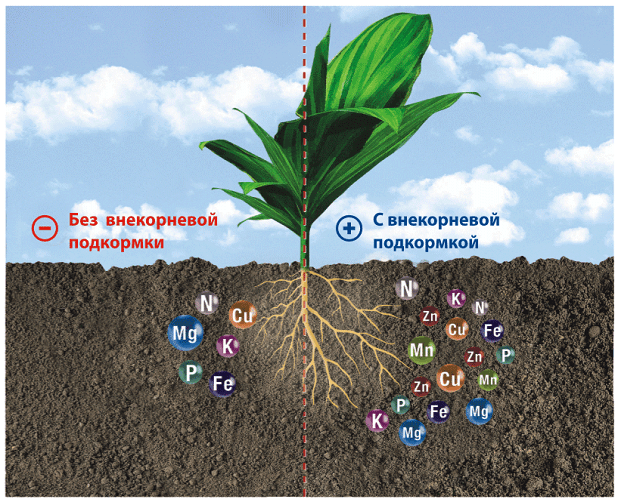
- Coffee grounds- used as a fertilizer for indoor flowers, and also perfectly loosens the soil. Most The best way the use of thick - when transplanting a plant, thereby the soil receives the necessary nourishment, becomes light, airy. feature coffee grounds is to neutralize the acidity of the soil.
- tea leaves- it is used mainly for top dressing, for this the flower is watered with weak tea leaves (without sugar).
- citrus peels(tangerines, oranges) - infusion on citrus zest - the best fertilizer for indoor plants. It is prepared in this way: crushed crusts are put in a liter jar and the jar is filled with boiling water. Insist this fertilizer you need about a day, then strain, add water to the original volume and water the flowers.
- Banana skins - natural fertilizers for indoor plants. Crushed skins are added to the substrate during plant transplantation. Rotting, they will become a kind of fertilizer for home flowers.
- Yeast, as fertilizer for indoor plants, are an excellent way to prepare a solution that stimulates plant growth. Due to a number of substances found in yeast, mineralization increases organic matter and activates the release of carbon dioxide in the soil. To prepare the solution, mix 10 g of yeast + 1 tbsp. granulated sugar + 1 liter of water. After insisting for 2 hours, dilute with water 1:5 and water the plants.
- onion peel - rich in trace elements. To prepare onion broth, take 50 g of husk and pour 2 liters of boiling water over it, boil for 10 minutes, then wait 3 hours for cooling and necessary infusion. Before spraying or watering, the broth is pre-filtered.
- Ash - indispensable fertilizer for indoor plants – contains a large number of trace elements. Ash is used during plant transplantation, mixing a small amount of it with the soil. This method protects the root system from decay, and also contributes to the disinfection of the soil. You can also make a tincture from the ashes, which will serve excellent top dressing for flowers (1 tbsp wood ash / 1 liter water).
- Nettle - excellent tool for restoring depleted soil . Fresh nettle (100 g) is poured into 1 liter of water, covered with a lid and infused for 24 hours. After straining, dilute 1:10.
Dear visitors, save this article to in social networks. We publish very useful articles that will help you in your business. Share! Click!
Mineral fertilizers
There are many varieties of mineral fertilizer release forms: liquid concentrates, which are used by adding a certain amount to water for irrigation; tablets or powders that dissolve in water; or in the form of sticks - they simply need to be stuck into the substrate, when watered, they will gradually begin to transfer nutrients to plants.
What fertilizers are best used in the care of indoor flowers
It should be noted that it is impossible to name a specific substance or fertilizer that will suit all plants. Each plant is special, and therefore has its own needs and preferences in certain substances.
ficus
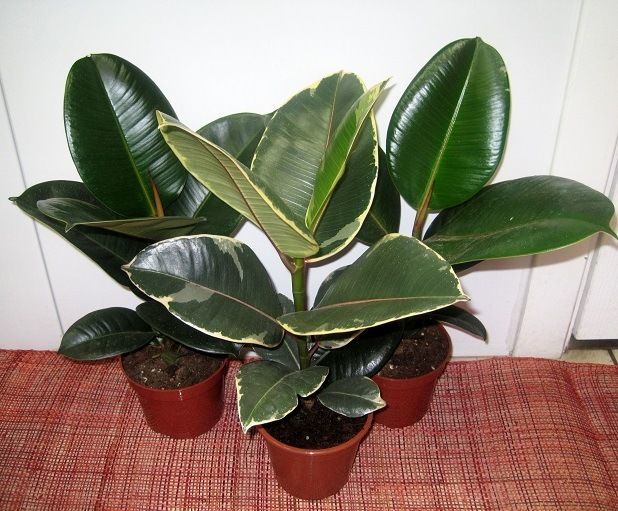
A frequent transplant is unacceptable for a plant, therefore, for normal development and growth, it needs additional nutrition. For ficus, fertilizer is simply necessary, especially during the main growth period (spring, summer).
Almost all varieties of ficus require nitrogen-containing fertilizers. After all, nitrogen allows the flower to actively grow. You can replenish this element with the help of organic substances, as well as using mineral supplements.
For the full development of ficuses, phosphorus, calcium, potassium and other trace elements are also needed, which are usually contained in complex mixtures. For ficuses, it is recommended to use dressings designed specifically for them, but if they are not available, you can use universal fertilizers for indoor plants.
Featured nice results when fertilizing ficuses with preparations: "Giant", "Ideal", "Kemira", "Palma", "Rainbow", "Humisol"
Spathiphyllum
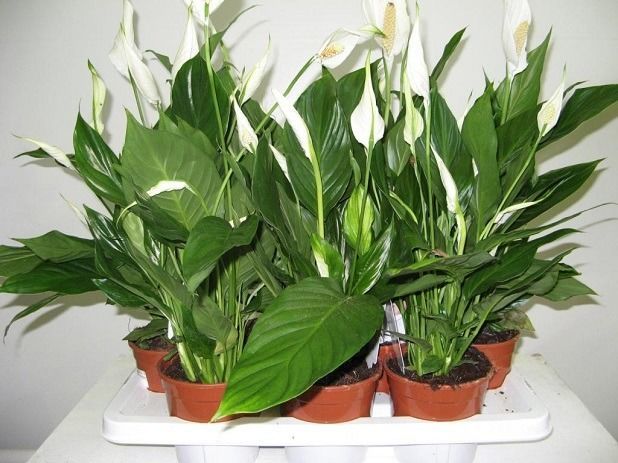
From March to September (during the period of active growth), the plant should be fed regularly; for spathiphyllum, the fertilizer is not prepared at a very high concentration (1-1.5 g per 1 liter of water).
Fertilizers for indoor plants that do not contain lime can be used to feed spathiphyllum: Flower, Azalea.
From organic fertilizers, the use of rotted cow manure is quite effective (1:15; 1:20). At the same time, abundant watering of the plant is required before and after feeding.
Zamioculcas
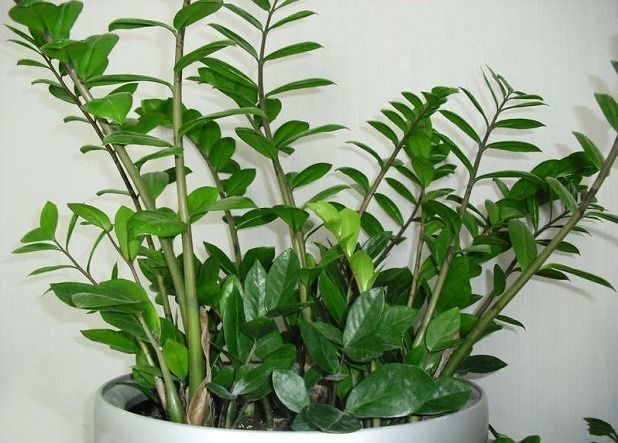
For zamiokulkas, fertilizer is applied periodically from mid-March until September (once every 14-20 days).
Zamioculcas responds well to the use of fertilizers intended for succulents and cacti, in which it is excluded or in minimum quantities nitrogen.
Ornamental fertilizers can also be used. deciduous plants, but they need to be bred several times stronger. Too concentrated or nitrogenous fertilizers can lead to burns of the root system or the formation of rot.
Bamboo
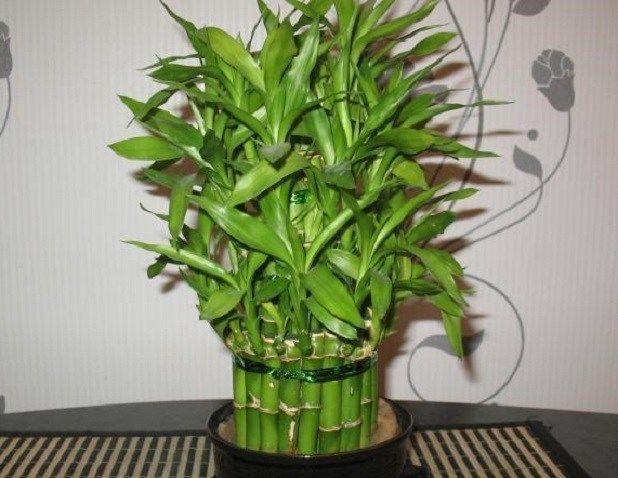
Bamboo is one of the few plants that can feel comfortable growing only in water. Undoubtedly, the plant looks very impressive in various transparent glass vases. But without nutrients, the plant cannot exist for a long time, therefore, fertilizers with mineral composition which are meant to keep the green leaves.
Suitable for bamboo mineral fertilizers specialized for dracaena. It is recommended to fertilize once every three months, this will provide the plant with green stems and juicy leaves.
And some secrets...
Have you ever experienced unbearable joint pain? And you know firsthand what it is:
- inability to move easily and comfortably;
- discomfort when going up and down stairs;
- unpleasant crunch, clicking not of their own free will;
- pain during or after exercise;
- inflammation in the joints and swelling;
- causeless and sometimes unbearable aching pain in the joints ...
Now answer the question: does it suit you? Can such pain be endured? And how much money have you already "leaked" for ineffective treatment? That's right - it's time to end this! Do you agree? That is why we decided to publish an exclusive interview with professor Dikul, in which he revealed the secrets of getting rid of joint pain, arthritis and arthrosis.
Be sure to see - do-it-yourself fertilizers for indoor flowers

